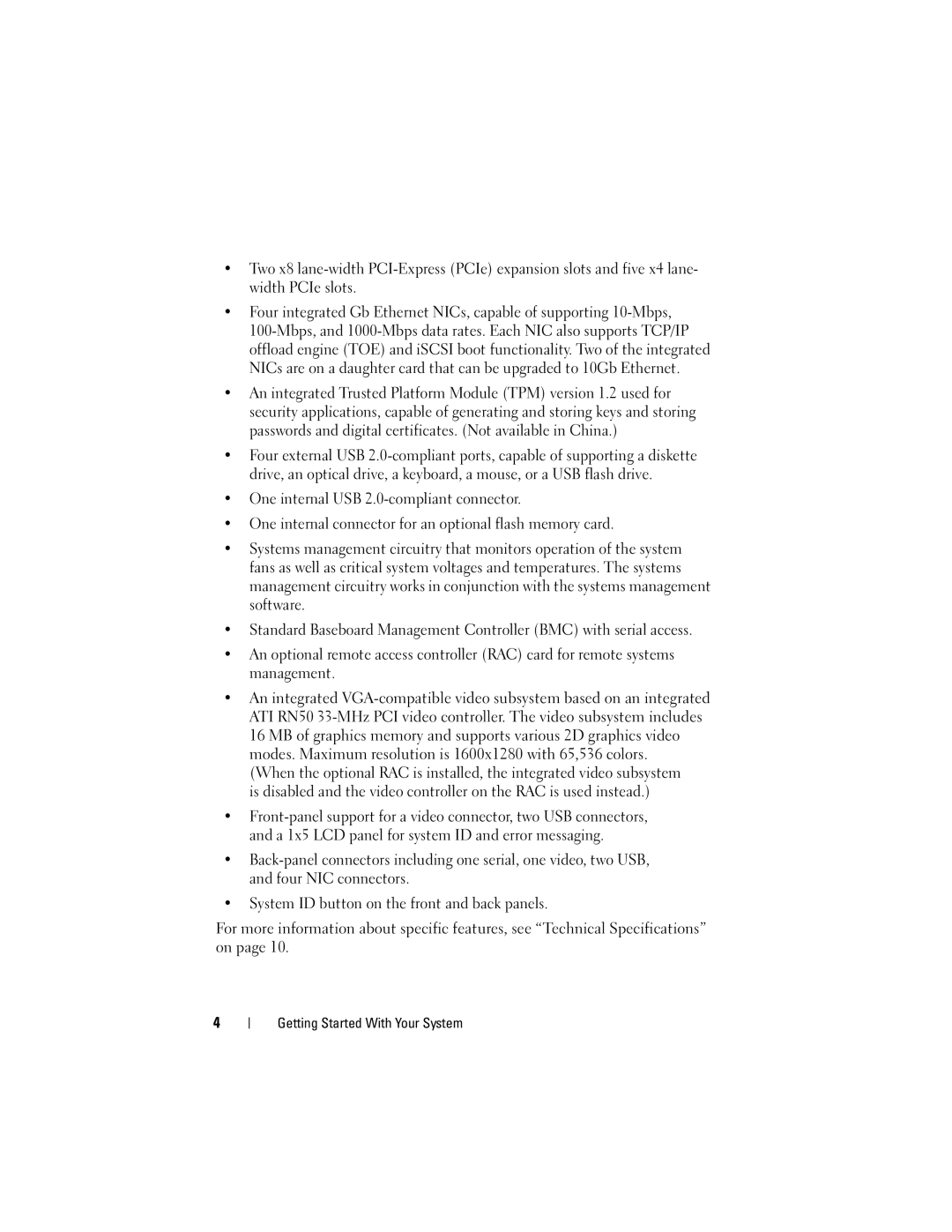R905 specifications
The Dell HX574 R905 server is a robust solution designed for enterprises that demand high performance and reliable scalability. Part of Dell’s PowerEdge lineup, the R905 addresses the requirements of virtualization, cloud computing, and large-scale data processing, making it an attractive choice for various workloads.One of the notable features of the Dell HX574 R905 is its powerful multi-core processors. Equipped with AMD Opteron processors, it offers up to 16 cores per CPU, allowing for exceptional multi-threading capabilities. This architecture is designed to enhance performance across multiple applications, making it suitable for environments that require significant processing power. The server supports several configurations, enabling businesses to tailor the processing capabilities based on their specific needs.
Memory capacity is another defining characteristic of the R905. The server can support up to 256 GB of RAM, utilizing DDR2 technology. This high memory capacity facilitates running memory-intensive applications smoothly, enabling businesses to maximize their productivity. The server is equipped with eight DIMM slots, giving administrators flexibility in memory expansion.
In terms of storage, the Dell HX574 R905 provides a range of options, supporting both SAS and SATA drives. This allows organizations to achieve a balance between performance and cost-efficiency. With the capacity to house up to 16 drive bays, the R905 ensures that there is ample storage space for high-demand database and application workloads.
The server also features advanced virtualization capabilities. With support for virtualization technologies like VMware and Microsoft Hyper-V, the R905 enables businesses to optimize their resource usage, running multiple virtual machines on a single physical server. This can significantly reduce hardware costs and improve energy efficiency.
Power management is another highlight of the Dell R905. It comes with various energy-efficient features, including the ability to dynamically allocate power based on workload demands. This capability helps organizations to lower their operational costs while ascertaining high availability.
In conclusion, the Dell HX574 R905 server stands out due to its powerful processors, extensive memory support, flexible storage options, and advanced virtualization capabilities. It is a versatile platform for businesses looking to optimize their IT infrastructure while maintaining scalability and efficiency. As demands continue to grow, the R905 remains a reliable choice for organizations seeking to enhance their computing capabilities.
